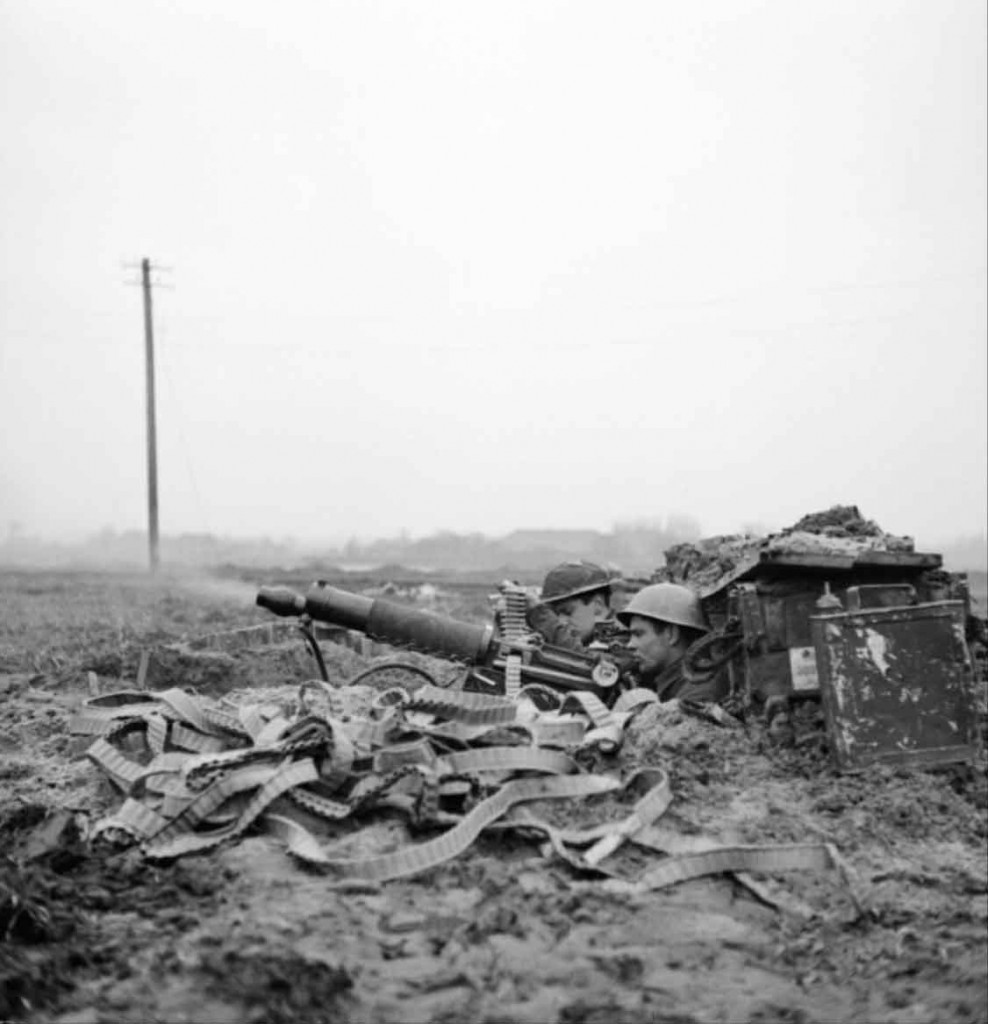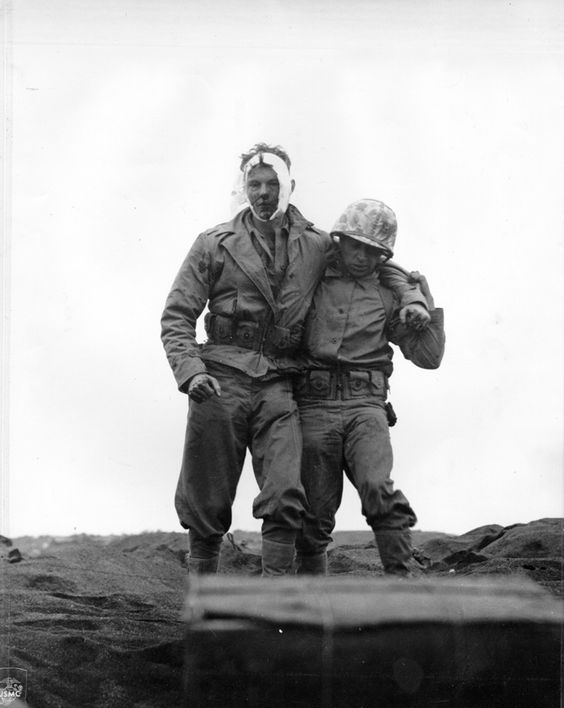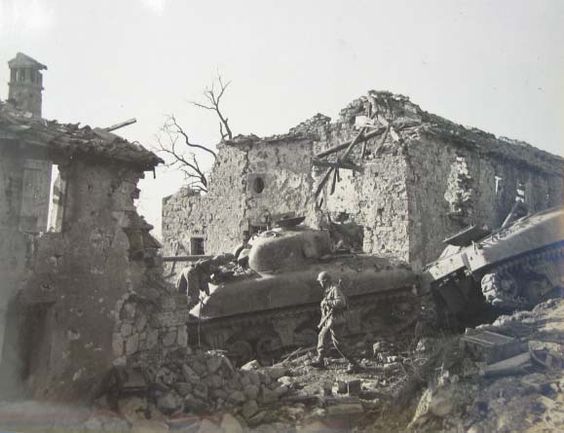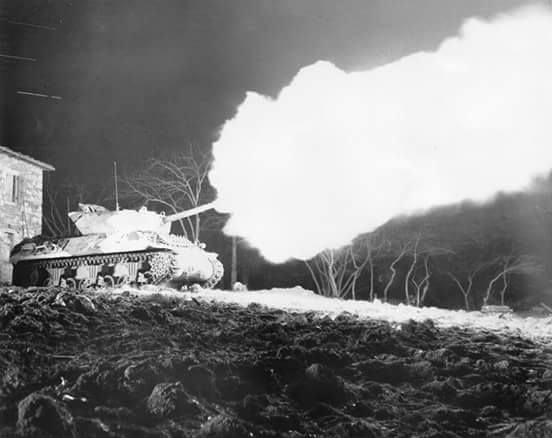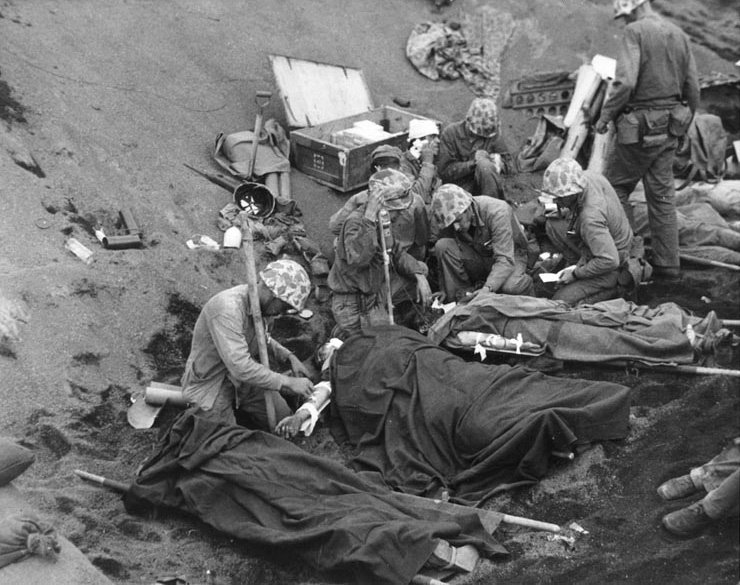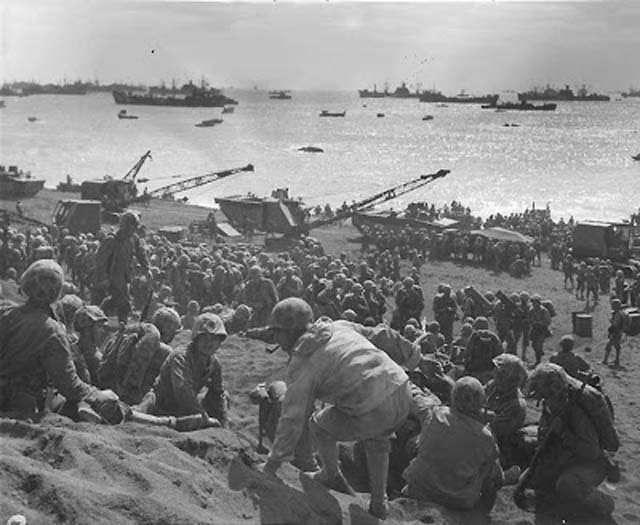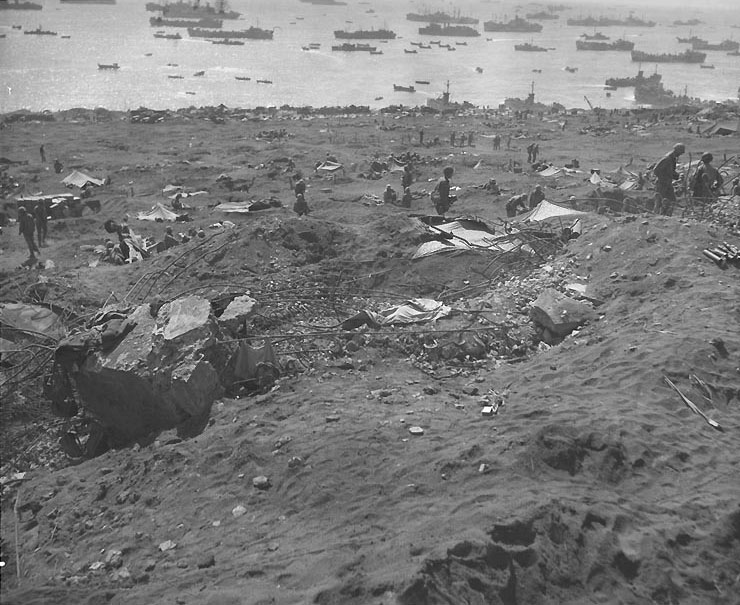Air Operations, Bonin Islands
Task Force 58 aircraft mount morning and afternoon sweeps against Haha Jima and Chichi Jima.
[Air Operations, CBI
BURMA- Nearly 100 10th Air Force P-47s and 459th Fighter Squadron P-38s attack troops, dumps, and targets of opportunity across Japanese-occupied Burma.
- 44 P-47s support Allied ground forces at Mongmit.
- 13 P-38s attack a bridge at Mong Long.
- 8 P-47s support Allied ground forces near Namhsan.
- 34 14th Air Force P-51s attack rail targets at Puchi and Tsingtao.
- 30 fighter-bombers attack rail and river traffic at numerous locations.
Air Operations, East Indies
XIII Bomber Command B-24s attack the Jesselton airfield on Borneo and supply dumps and Japanese Army ground troops on Borneo.
[Air Operations, Europe
900 B-17s blast the passenger station and the marshalling yards in Nuremburg. 700 escorts strafe locomotives, rolling stock and parked aircraft. 23 planes are lost.
RAF BOMBER COMMANDDaylight Ops:
Minor Ops:
- An RCM sortie is flown by a Halifax.
- 514 Lancasters and 14 Mosquitos of Nos. 1, 3, 6 and 8 Groups attack Dortmund in Bomber Command's last large-scale raid on this target. The intention of this raid is to destroy the southern half of Dortmund and Bomber Command claims that this was achieved.
- 14 Lancasters are lost.
- 173 aircraft inlcuding 156 Halifaxes, 11 Mosquitos and 6 Lancasters of Nos. 4 and 8 Groups attack the Rhenania Ossag refinery in the Reisholz district of Düsseldorf. The raid is accurate and it is later established that all oil production was halted.
- 4 Halifaxes and 1 Lancaster are lost.
- 128 aircraft of Nos. 6 and 8 Groups attack the Rhenania Ossag refinery at Monheim with similar results to the Reisholz raid. In the aircraft total are 112 Halifaxes, 10 Mosquitos and 6 Lancasters.
- 2 Halifaxes are lost
- 154 Lancasters and 11 Mosquitos of No. 5 Group are ordered to attack the Mittelland Canal near Gravenhorst, but the raid is ordered to be abandoned by the Master Bomber because the area is covered by cloud.
- There are no losses.
- Diversionary and 91 aircraft from Heavy Conversion Units make a sweep over the North Sea, 66 Mosquitos are sent to Berlin and 16 to Mannheim, 6 aircraft are on Resistance operations, and there are 45 Mosquito patrols and 65 RCM sorties.
- 1 aircraft, type unknown, of No. 100 Group is lost.
GERMANY:
- 428 1st Air Division B-17s and 403 3rd Air Division B-17s attack rail targets at Nurnberg, but 360 2nd Air Division B-24s abort because of bad weather along their route over Belgium.
- 5 B-17s and 13 of 476 VIII Fighter Command escorts are lost.
- VIII Fighter Command pilots down 16 Luftwaffe aircraft over Germany between noon and 1320 hours.
GERMANY:
- 9th Air Force fighters and fighter-bombers attack bridges and ground defenses.
ITALY:
- 12th Air Force B-25s attack bridges at four locations.
- XXII TAC A-20s and night fighters attack supply dumps and communications targets in the Po River valley.
AUSTRIA:
- 15th Air Force heavy bombers attack a marshalling yard and two oil refineries at Vienna, and a steel plant.
- 15th Air Force heavy bombers attack shipyards at Fiume and Trieste.
- 15th Air Force heavy bombers attack port facilities at Pula.
Air Operations, Formosa
- Weathered out of their assigned target, 63 38th and 345th Medium Bomb group B-25s bomb and strafe the town area at Choshu.
- V Fighter Command fighter-bombers attack numerous rail targets thoughout the island.
Air Operations, Philippines
FEAF B-24s attack Puerto Princesa, Palawan and underground installations on Corregidor.
[Air Operations, Volcano Islands
- Supported by US surface warships and hundreds of attack and combat-support sorties by Task Force 58 and Task Group 52.2 carrier aircraft during the morning, V Marine Amphibious Corps ground troops overrun the Motoyama Airfield No. 1 on Iwo Jima. Worsening weather curtails all combat flight operations by the afternoon.
- In all throughout the day, US carrier aircraft mount 545 effective sorties in 27 separate missions against Iwo Jima.
Atomic Research
US scientists and engineers working at the K-25 uranium plant at Oak Ridge, Tennessee, now have enought Uranium 235 to produce an atomic bomb.
[Eastern Front
The Germans continue with their counterattacks in Hungary between Lake Balaton and Lake Venencei. There is bitter fighting between Székesfehérvár and Dunaföldvar. The German divisions also counterattack from the south across the Drava. The German 8th Army contains Russian pressure in the Esztergom area, on the Danube northwest of Budapest.
There are local actions on the other fronts, in Silesia, East Prussia and northern Latvia.
The Soviet forces are now moving northward into German Pomerania on a 200-mile front. The German forces opposing them are from Himmler's Army Group Vistula, and his incompetence has contributed to their plight.
EAST PRUSSIAThe Germans have reopened a route out of Königsberg, allowing 100,000 civilians to flee west to Pillau, although they have to run the gauntlet of Soviet artillery and ground-attack aircraft as they do so.
POLANDThe defenders of Breslau attempt to break out but are stopped by the Soviet 6th Army, suffering heavy losses.
HUNGARYThe I SS Panzer Corps continues to pressure the 7th Guards Army in the Hron bridgehead, and the German 6th Army attacks the 3rd Ukrainian Front between Lakes Balaton and Velencei. The German 8th Army around Esztergom is attacked by the Soviet 46th Army.[MORE]
[Iwo Jima
The 4th and 5th Marine Divs, supported by fire from warships, artillery, tanks and flamethrowers, slightly extend their beachhead. The 5th, after repelling a furious night attack by the Japanese, advances slowly to north and south. From Mount Suribachi, which has been made into a fortress, the Japanese direct a murderous volume of fire which cause huge losses among the Americans, and some units are decimated suffering 20 to 30 percent casualties in the first 2 days. Tank losses amount to about 30 percent at the end of the second day of the landing. The cruiser Biloxi (CL-80) and the hospital ship Samaritan (AH-10) are damaged accidentally by US naval gunfire. Also damaged in collisions in the day's operations are the attack transports Napa (APA-157) and Logan (APA-196) and the attack cargo ship Starr (AKA-67). The landing craft LST-779 is damaged by a coastal mortar.
[Pacific
- The US submarine Hawkbill (SS-366) attacks a Japanese convoy about 175 miles west of Singapore and sinks the merchant cargo ship Daizen Maru (5396t).
- The US submarine Pargo (SS-264) sinks the Japanese destroyer Nokaze off Cape Varella, French Indochina. Accompanying Japanese destroyer Kamikaze unsuccessfully counterattacks with depth charges.
- The Japanese army ship Rozan Maru is sunk by mine below Taku, China.
- The Japanese cargo ship No.34 Kashiwa Maru is sunk by mine off Surabaya, Dutch East Indies.
Philippines
On Luzon while the US XIV Corps makes arrangements for the assault on the center of Manila, the XI Corps takes 3 or the 4 enemy strongpoints in the area northwest of Lumboy. The XI Corps reaches the west coast on the Bataan peninsula at Bagac.
Two of the 1st Cavalry Division's brigade combat teams cross the Marikina River, supported on their left flank by the 6th Infantry Division. The Shimbu Group holds the hills east of the river. The Shimbu positions occupy about 30 miles of the high ground overlooking the city of Manila and are defended by 30,000 troops. Gen Krueger assembles the 6th Infantry Division, the 43rd Infantry Division, elements of the 1st Cavalry Division, and the 112th Cavalry RCT for an offensive against the Japanese defenders. The objective of the offensive is to gain control of the water supply for the city of Manila, collected behind dams on the Angat and Marikina Rivers. The 6th Army planners believe that the Wawa kDam is one of the critical objectives. In reality most of Manila's water comes for the Ipo Dam in the Marikina River Valley. The 6th Infantry Division is to attack to capture the Wawa Dam. The 2nd Cavalry Brigade of the 1st Cavalry Division is to capture Antipolo. The 11th Airborne Division, reinforced by the 158th RCT, prepares to clear the area south of Manila.
In the southern Philippines units of the X Corps, US 8th Army, carry out landings, uncontested by the Japanese, on several islands in the San Bernardino Strait. The occupation of Samar continues.
United States, Home Front
The White House in announcing Roosevelt's meetings in Africa with Haile Selassie and Kings Farouk and Ibn Saud, says pointedly that de Gaulle had refused to meet with the President.
[![]()
![]() |
| ![]()
![]() ]
]
Western Front
Gen Eisenhower, Commander-in-Chief of Allied forces in Europe, lays down in a letter to the commander of the 3 army groups - Montgomery of the 21st, Bradley of the 12th, and Devers of the 6th - that Montgomery's forces will open the general offensive across the Rhine even if Bradley's and Devers's groups are still engaged in mopping up operations on the west bank in readiness for the crossing. However, once all the armies have reached the east bank, the 2 main lines of advance will be on the Ruhr and on Frankfurt.
In the British XXX Corps sector, Canadian 1st Army, a Bailey bridge over the Maas is opened to vehicular traffic.
Along the west bank of the Our, the units of the VIII Corps, US 3rd Army, and particularly the 6th Arm Div, renew their attacks and penetrate the Siegfried Line fortifications north of Dahnen. Further south, the 80th Div, XII Corps, reaches favorable positions for the attack on the heights south of Mettendorf. In the XX Corps sector, where the objective is the triangle between the Saar and Moselle Rivers, the 10th Arm Div goes into action, supported by units of the 94th Div.
[![]()
![]() |
| ![]()
![]() ]
]
Images from February 20, 1945
|
|
|
|
|
|
|
|
